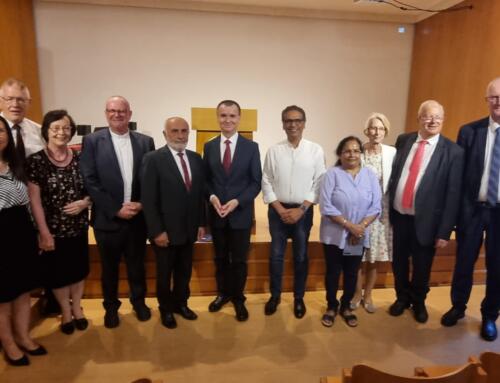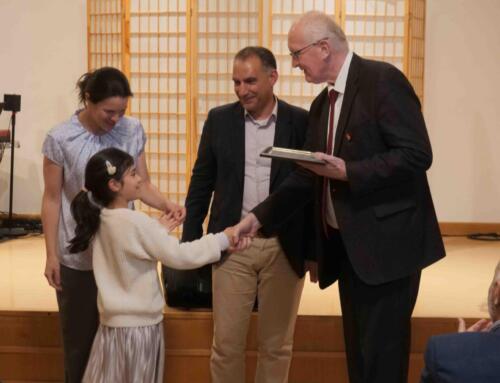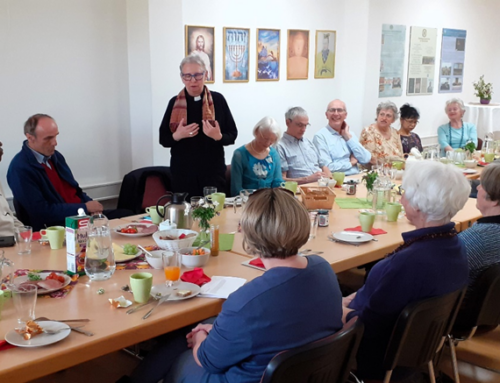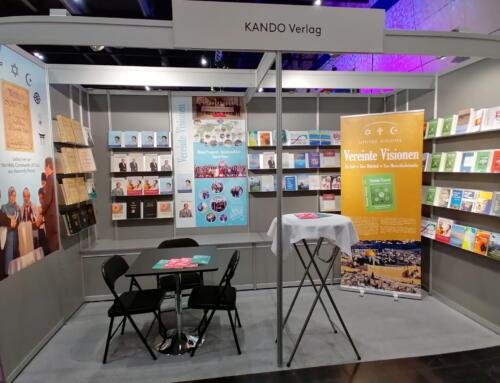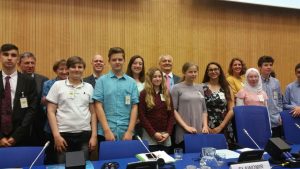
Vienna International Centre Conference Room M3
Organizers: Academic Council on the United Nations System (ACUNS)
Women’s Federation for World Peace International (WFWPI)
The meeting, which drew an audience of approximately one hundred people, was opened by
Dr. Slawomir Redo (Senior Adviser, Academic Council of the UN System, (Vienna, Austria) Dr. hab. (Law/Criminology)).
Mrs Renate Amesbauer (President of WFWP Austria) followed with a moving tribute to the life and work of the late Ms. Elizabeth Jane Riedl, who worked selflessly to promote peace in Britain, US, Africa, Germany and Austria. She was particularly active with WFWPI from the year 2000 when she moved to Salzburg from Germany.
Dr Michael Platzer (Liaison Officer of Academic Council on the United Nations System to the Vienna based int. organizations and Co-chair of the Alliance of NGOs for Crime Prevention and Criminal Justice) walked us through the Sustainable Development Goals of the UN, particularly focusing on Goals 4 and 16 which deal with education, crime prevention and social justice.
Mr. Martin Kienl (Deputy Head of the Department of ‘Integration Coordination’ at the Federal Ministry for Europe, Integration and Foreign Affairs), who has been active in the field of integration since 2011, gave a comprehensive talk on his work. He stated that integration does not happen automatically. A framework must be defined quickly as it has become a pressing issue since the recent influx of refugees and migrants. He gave an overview of the government’s strategy to support successful co-existence. This includes mandatory language courses before entering regular schools – followed by classroom learning and early linguistic development in kindergartens. Teachers receive support from psychologists and counsellors. In addition, the programme ‘Together Austria’, which has 300 ambassadors who visit schools to talk to migrants and refugees, has reached 45,000 immigrant pupils to date. Thus, migrants are also taught to respect European and Austrian values. He concluded that the greater the integration, the greater the involvement in the labour market and the lower the crime rate. He views the pace of integration as a marathon – not a sprint.
Ms Zita Kiedler, (teacher of English and music in the European Middle School) followed with a unique presentation that involved her pupils. The school has pupils from diverse backgrounds and focuses on integration and the promotion of cultural education through various activities. Ms. Kiedler stated that much needs to be done to overcome the prejudice local pupils receive in the home. Furthermore, many migrants cannot express themselves well in German, resulting in misunderstanding and confrontation sometimes. She conducted a questionnaire in the school where both local and immigrant pupils were asked how they view those who come from another culture or nation. The pupils read a summary of the responses, which was particularly insightful.
Dr Katharzina Kubacka (Research Officer at the Global Education Monitoring Report, which is published by UNESCO) followed with a presentation on education. She explained that education is a powerful tool for justice, inclusion and peace, but it is complex and there are many inequalities based on ethnicity, social class and religion. In conflict zones, 36% of children are out of school. Furthermore, a high percentage of refugee children, the majority of whom are in the developing world, do not attend school. Other barriers to inclusion include bullying, which leads to depression and in some cases suicide. Bullied pupils, in general, are weaker at maths. Language is a further tangible barrier. Pupils need at least 6 years basic education in their mother tongue. She also stated that textbooks occasionally tend to be biased – e.g. they portray Islamic and Arab areas as conflict zones. Teachers need training to practise inclusion and to teach the practice of peace.
Giovanna Campello (Officer-in-Charge of the Prevention, Treatment and Rehabilitation Section in the UNODC) was the next speaker was. She claimed that traditional drug prevention programs do not work and that it is better to invest in healthy and safe development, beginning with babies. This should be followed by early childhood education in kindergartens to support families, particularly those marginalised. The promotion of good mental health leads to good long-term completers.
She explained how certain games and stories, such as the dinosaur story or good behaviour game during maths lesson, support the development of personal and social skills, such as anger control. She went on to state that disruptive children are usually vulnerable, but they should not be stigmatized as they benefit most from the programme. In conclusion, she stated that violence prevention in school is gaining greater success.
Dr. Candice Welsch, (Chief, implementation Support Section Corruption and Economic Crime Branch, UNODC), the final speaker, presented the program: “Education for Justice as a tool to preventing crime and shaping the values of future generations” by Promoting a culture of lawfulness and the rule of law through education.
Through UNCAC, article 13 States that parties are strongly encouraged to implement public education programmes at all levels of schools including universities. States receive assistance in this regard through two initiatives of UNODC: ACAD and E4J.
The Doha Declaration, adopted by the 13th UN Congress on Crime Prevention and Criminal Justice, April 2015, underlines the fundamental importance of education.
E4J (Education for justice) promotes education programmes in all UNODC mandate areas and at all education levels, through developing materials, such as class modules, teachers’ guides and innovative teaching tools.
The subsequent Q+A session demonstrated the interest of the audience. Furthermore, the pupils of EMS were grateful for the opportunity to view the inside of the UN building and gain a lasting impression before departing.
Mary Hinterleitner
Annex concerning the participation of pupils from EMS:
Mrs. Renate Amesbauer visited the school some days later and met the Director, Ms. Reindl.
She and her staff were grateful that some of their pupils could experience the UN through this event; Dir. Reindl said how impressed she was to see her teachers and pupils to dress up elegantly for the event. She is proud of Ms. Kiedler who worked hard to make all the preparations within such a short time. As the children were drawn from various classes, other teachers lent their support also.
The director expressed her readiness to support any similar excursion for her pupils in the future.
Renate Amesbauer
Annex concerning the participation of pupils from EMS:
Ms. Renate Amesbauer visited the school some days later and met the Director, Ms. Reindl.
She and her staff were grateful that some of their pupils could experience the UN through this event; Dir. Reindl said how impressed she was to see her teachers and pupils to dress up elegantly for the event. She is proud of Ms. Kiedler who worked hard to make all the preparations within such a short time. As the children were drawn from various classes, other teachers lent their support also.
The director expressed her readiness to support any similar excursion for her pupils in the future.
Renate Amesbauer

